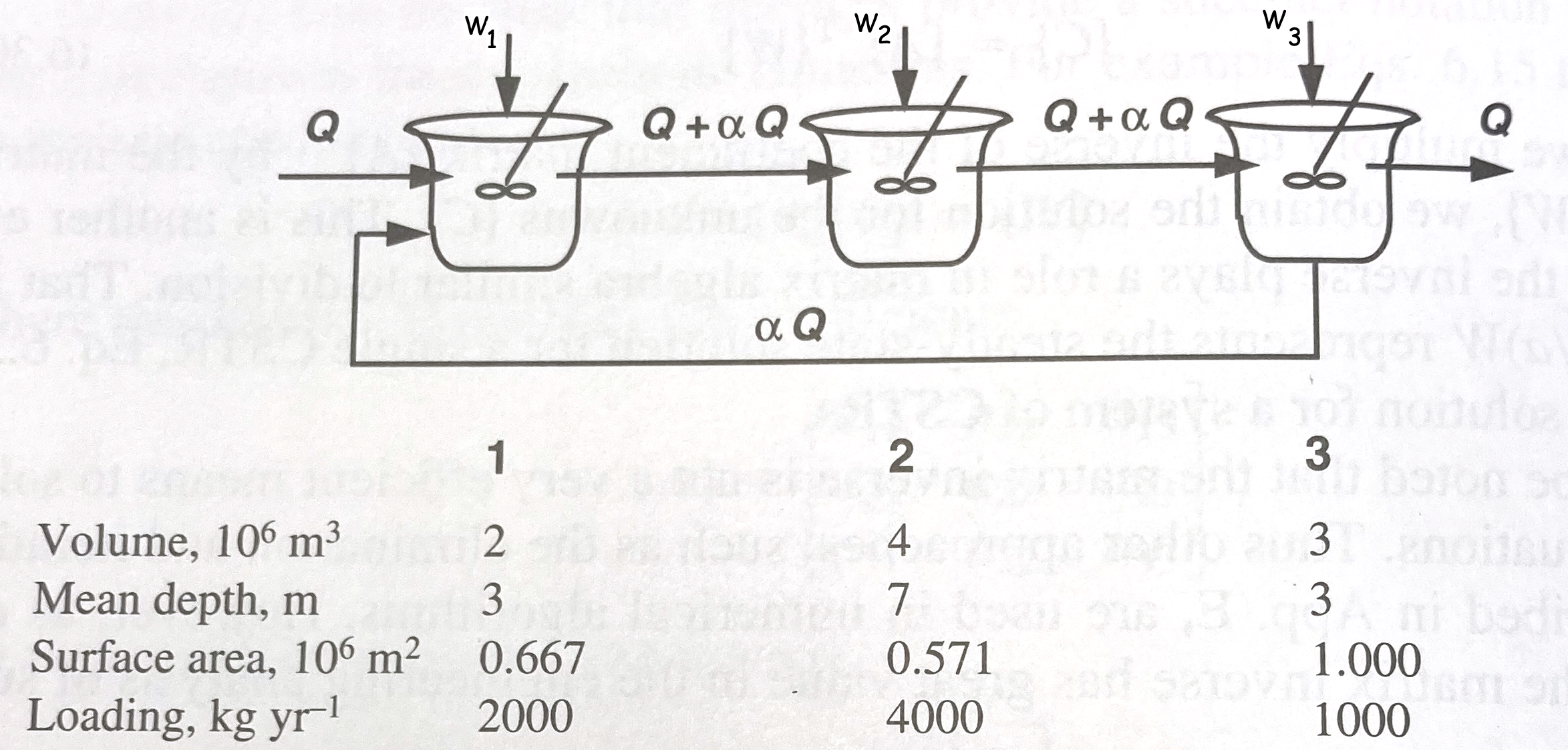Exercise 5.¶
Consider the steady-state reactor system with feedback as shown below:

A mass balance of the system assuming complete mixing in each reactor (pond, lake, vat, ...) is
\begin{gather}
\begin{matrix}
W_1 = & (Q+\alpha Q + v A_1) \times C_1 & + 0 \times C_2 &- \alpha Q \times C_3\\
W_2 = & -(Q+\alpha Q) \times C_1 & + (Q+\alpha Q + v A_2) \times C_2 & 0 \times C_3 \\
W_3 = & 0 \times C_1 & - (Q+\alpha Q)\times C_2 & +(Q+\alpha Q + v A_3) \times C_3\\
\end{matrix}
\end{gather}
where $W_i$ is the loading in kilograms/year , $A_i$ is the reactor surface area in $10^6$ meters squared, $v$ is the settling rate in each reactor in meters/year, $\alpha$ is the recycle fraction, and $Q$ is the volumetric flow rate through the system. The unknown values are the constituient concentrations $C_i$ in each reactor.
Decomposing the system of equations above into a Matrix-vector system $\mathbf{A} \cdot \mathbf{C} = \mathbf{W}$, where $\mathbf{A}$ is the coefficient matrix (which we will build using $Q$,$\alpha$, and $v A_i$), $\mathbf{C}$ is the vector of unknown concentrations of the constituients, and $\mathbf{W}$ is the loading vector yields:
\begin{gather}
\begin{pmatrix}
(Q+\alpha Q + v A_1) & + 0 &- \alpha Q \\
-(Q+\alpha Q) & + (Q+\alpha Q + v A_2) & 0 \\
0 & - (Q+\alpha Q)& +(Q+\alpha Q + v A_3) \\
\end{pmatrix}
\cdot
\begin{pmatrix}
C_1 \\
C_2 \\
C_3 \\
\end{pmatrix}
~=~
\begin{pmatrix}
W_1 \\
W_2 \\
W_3 \\
\end{pmatrix}
\end{gather}
Complete a script that constructs $\mathbf{A}$ given $Q=1\times10^6$ cubic meters/year, $\alpha$ = 0.5, and $v$ = 10 meters/year. Estimate the reactor constituient concentrations in parts per million (milligrams).
Now repeat the computation with $\alpha$ = 0.0


